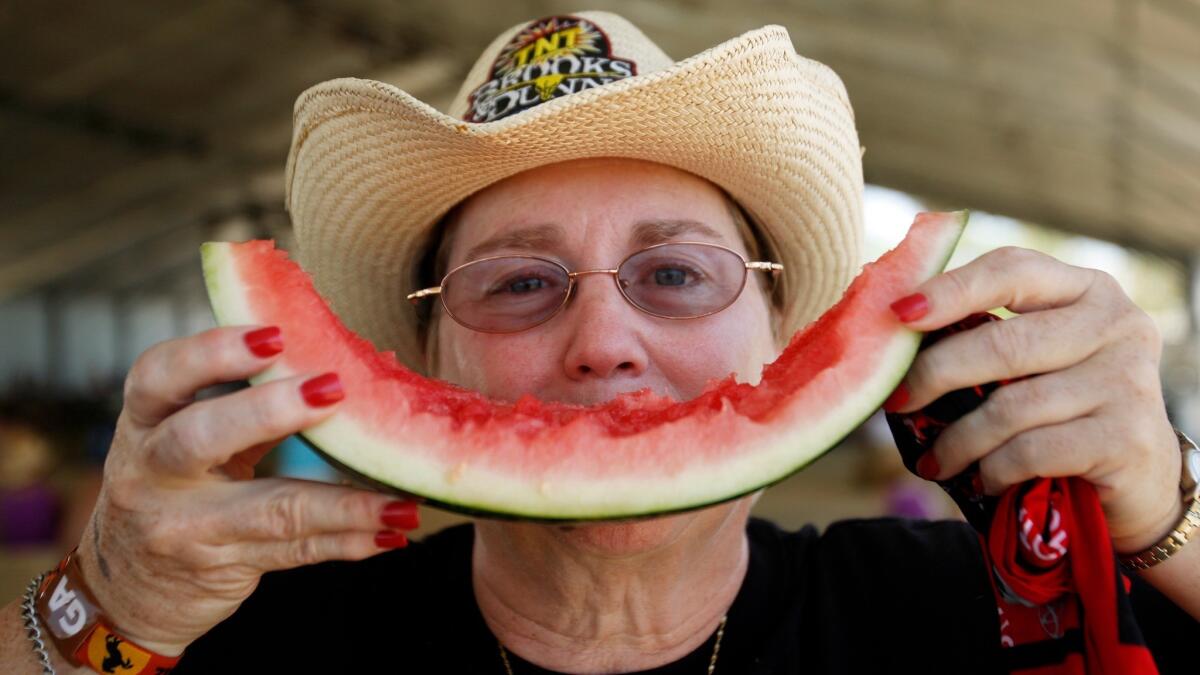Why it’s so hard to fake the smell of watermelon

What’s better on a hot day than a slice of watermelon?
- Share via
There are few smells that conjure up all the pleasures of a hot summer day more than freshly cut watermelon. And, it turns out, there are few smells more difficult to duplicate chemically.
Most artificial watermelon fragrances and flavors end up smelling like a teenage girl’s shampoo, and tasting about as subtle as a Jolly Rancher candy.
But scientists may be one step closer to solving that problem. Perhaps thankfully, there are several very long steps remaining.
In a report on the always interesting British blog Compound Interest, which is dedicated to presenting popular chemistry news in a comprehensible, highly graphic fashion, it turns out that the two main chemical compounds responsible for watermelon fragrance are a pair of aldehydes.
Aldehydes are organic chemical compounds that are often associated with fragrances. The two that are most prevalent in watermelons are C6 and C9 aldehydes, which are typically described as being “green” smells.
More specifically, they say it is a compound called (Z,Z)-3,6-nonadienal, which is described in technical literature as “green fatty dry cucumber violet leaf” or “green, cucumber, melon, fatty and vegetative” or “green, cucumber, melon, fatty and rindy with a hint of meat fat,” depending on whether you’re referring specifically to the odor or the flavor.
While that may not sound mouth-watering, think of the smell of a watermelon rind and you’ll see the connection.
That’s just the start of watermelon’s fascinating chemistry. The distinctive bright red color comes from a pigment called lycopene, which also colors tomatoes. In fact, watermelon has almost twice as much.
Lycopene has been highly touted for its supposed health benefits, though the blog points out that these benefits are either “conflicted or limited.”
Also, Compound Interest reports, there have been those touting watermelon as “nature’s Viagra,” the basis of which is even more sketchy.
As for the prospects for artificially reproducing watermelon’s distinctive perfume, the blog is skeptical.
“Whilst (Z,Z)-3,6-nonadienal may well be the compound that gives watermelon much of its distinctive aroma and flavour, it’s unfortunately easily broken down, which limits its potential for use as an artificial flavouring.
“Attempts to produce structurally similar esters that might provide a similar aroma and flavour have also been unsuccessful to date, so it doesn’t look like the problem of substandard watermelon flavourings is one that’s going to go away any time soon.”
The scent of summer is safe for at least a little while longer.
Are you a food geek? Follow me on Twitter @russ_parsons1
More to Read
Eat your way across L.A.
Get our weekly Tasting Notes newsletter for reviews, news and more.
You may occasionally receive promotional content from the Los Angeles Times.








